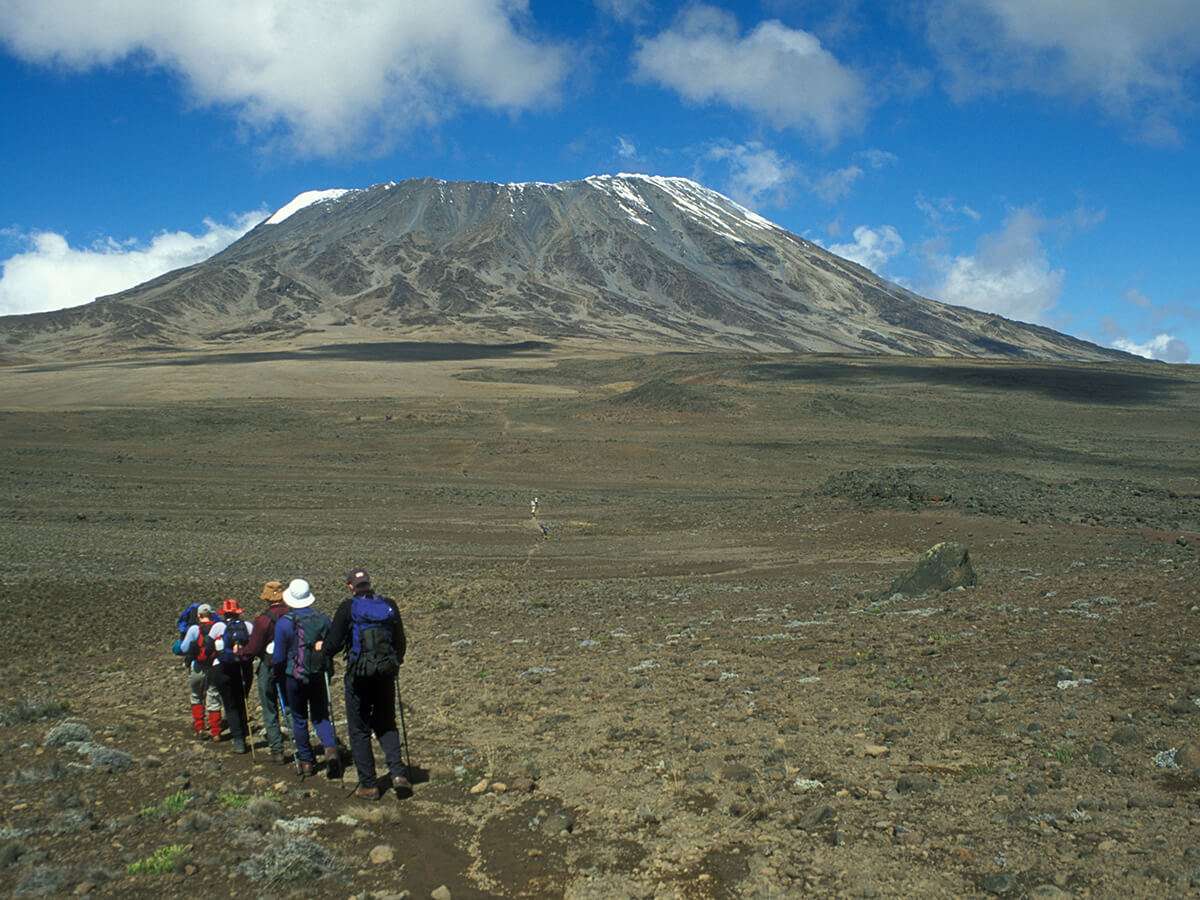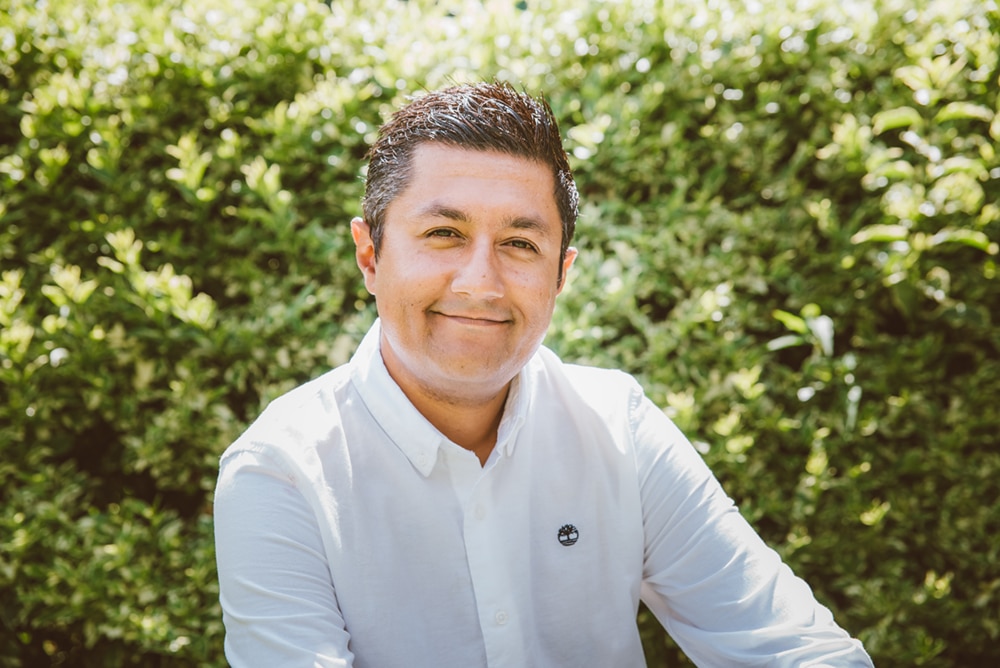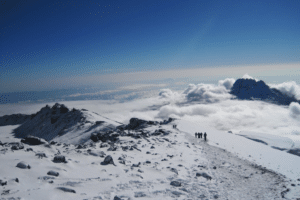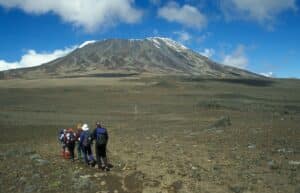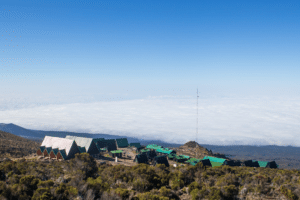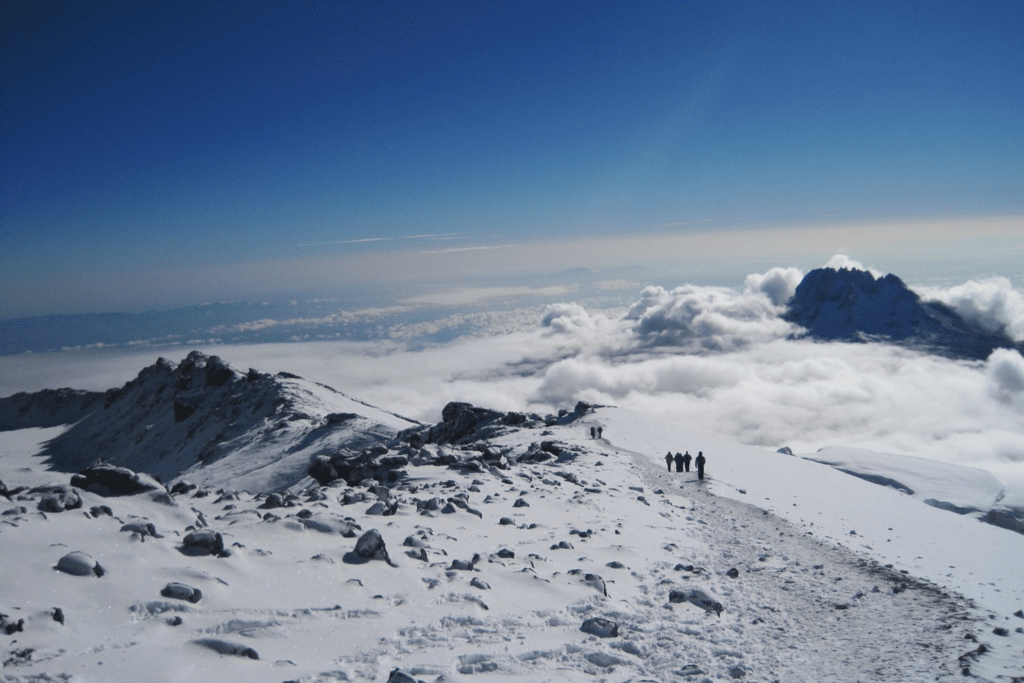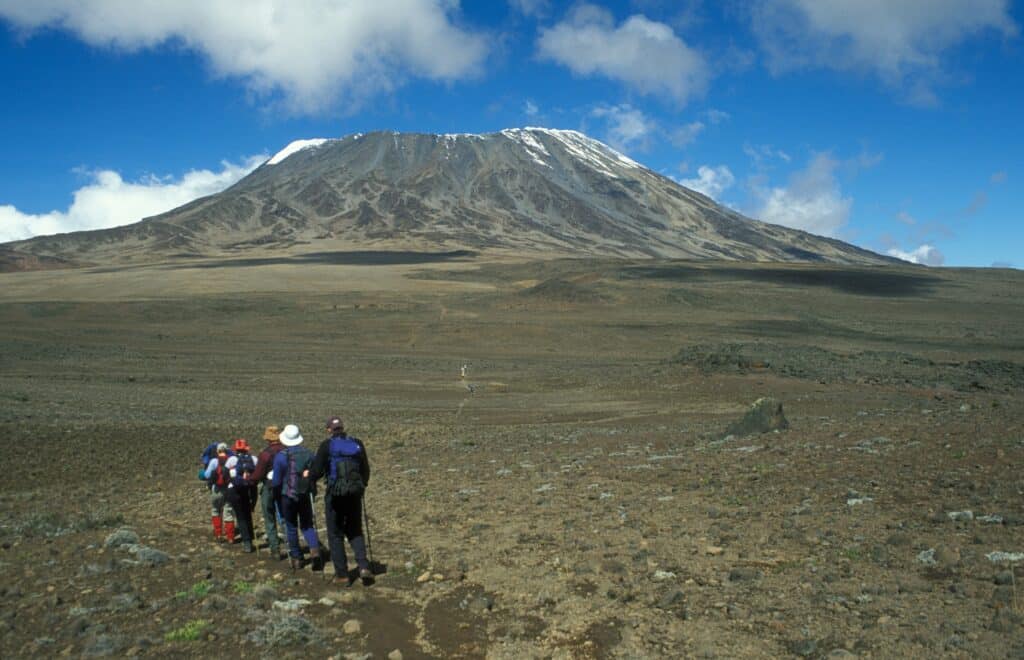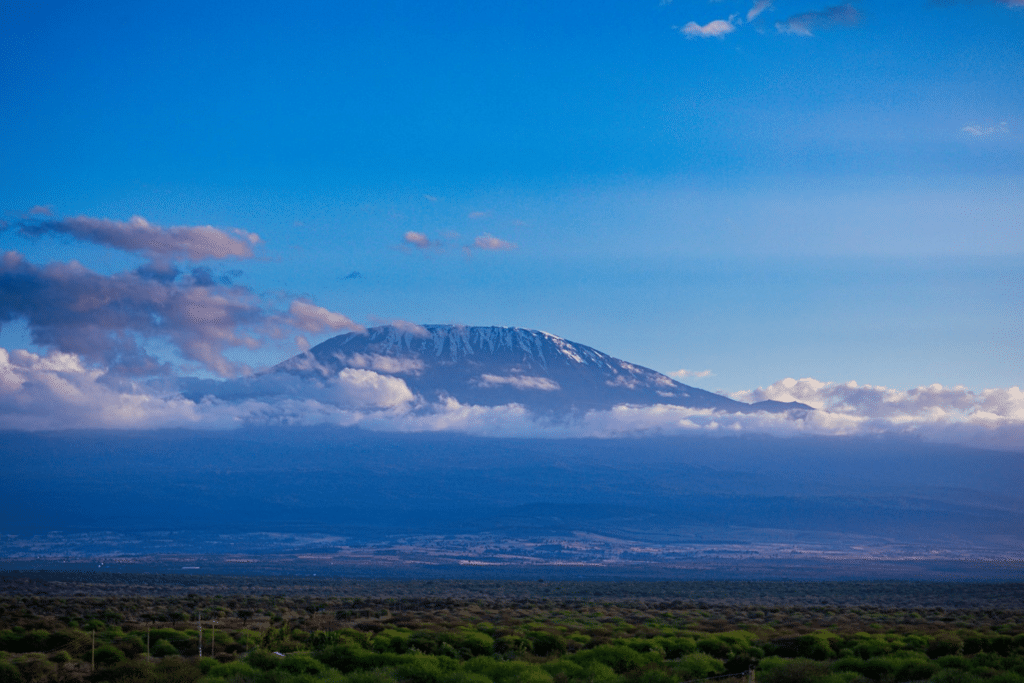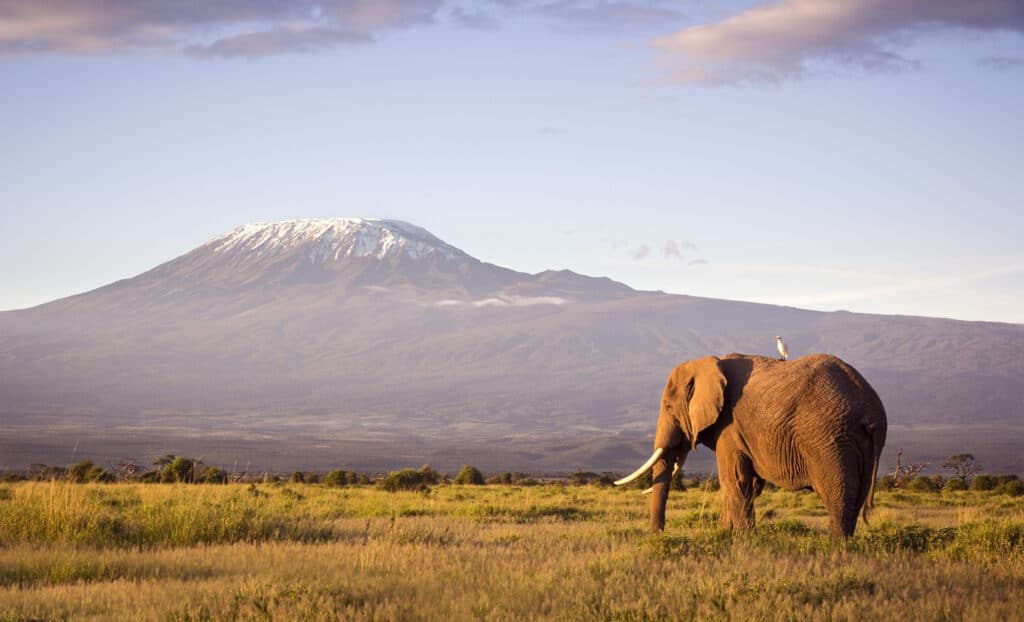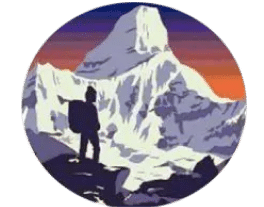Finding exciting facts about Mount Kilimanjaro is simple. After all, it is a UNESCO World Heritage Site with fascinating ecology, millennia-long history, and mind-blowing sceneries!
These interesting facts about Mt. Kilimanjaro will reveal some lesser-known things about Tanzania’s famous attractions and explore eccentricities that travel buffs love.
And who knows? This compilation of Mount Kilimanjaro trivia could help you win the next quiz night at the local pub. Ready to learn more facts about Kilimanjaro, Africa’s highest peak? Let’s dive in!
20 mind-blowing facts about mount Kilimanjaro
Mount Kilimanjaro is undoubtedly not for the faint of heart. This towering peak in Tanzania is considered one of the world’s most challenging mountains.
With that said, its majesty is well worth the trek. If you’re up for the challenge, here are some fantastic facts about Kilimanjaro that will make your ascent all the more worthwhile:
1. Mount Kilimanjaro is the highest freestanding mountain in the world

Mount Kilimanjaro’s biggest claim to fame is, without a doubt, its height. It is Africa’s tallest mountain, 5,895 meters above sea level.
But the highest freestanding mountain in the world? What does that mean, and what happened to Everest? Kilimanjaro isn’t part of any mountain range. It’s in an entire league of its own.
Everest, on the other hand, is a peak in the Himalayas mountain range.
2. There are 5 major climate zones on Kilimanjaro

The start of your trek up Mount Kilimanjaro will look completely different by the time you summit. And no, it’s not the icy caps of “Everyone’s Everest” that make the difference.
Kilimanjaro is home to five different climate zones:
- Cultivation Zone: Lowland forest and farmland.
- Montane Rain Forest: Dense, damp tropical forest home to plenty of flora and fauna.
- Heath/Moorland: Small scrubs replace the forest, and temperatures start to drop.
- Alpine Desert: Little water and hardly any plants. Expect high daytime temperatures, which drop to below freezing at night.
- Ice Cap Zone: Also known as the Arctic Zone, it has half of the available oxygen you’ll find at sea level.
It’s like walking from the Equator to the North Pole. Pretty incredible that you get to experience all those climates in one climb, right?
3. Mount Kilimanjaro is one of the seven summits
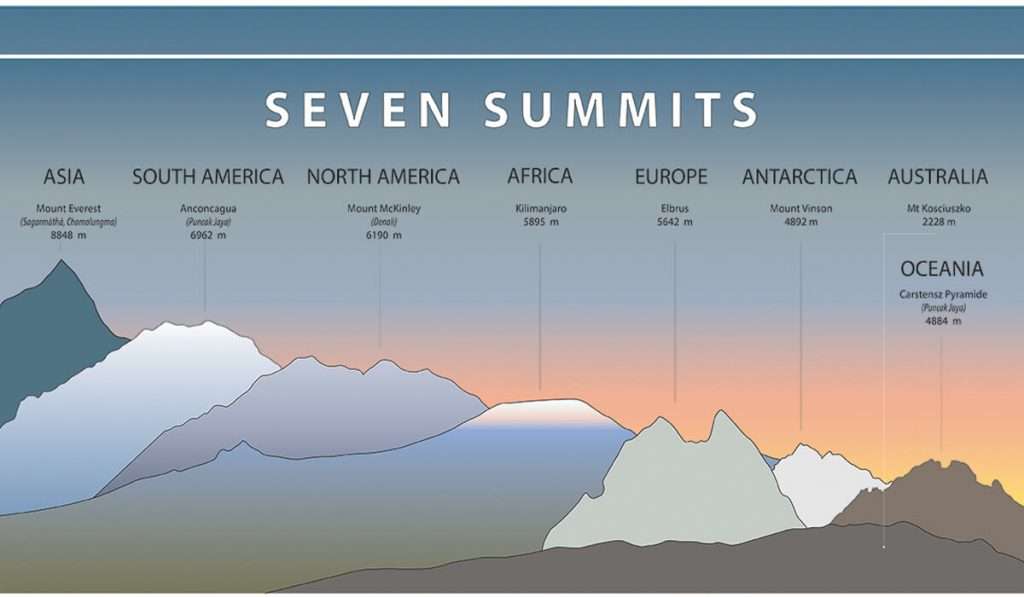
As Africa’s highest peak, Kilimanjaro is one of the Seven Summits. What are the Seven Summits? These are the highest mountains on each continent. For mountaineers around the world, conquering each one is the ultimate goal.
The other six mountains are:
- Mount Everest in Asia: 8,848 meters
- Mount Aconcagua in South America: 6,961 meters
- Mount Mckinley in North America: 6,194 meters
- Mount Elbrus in Europe: 5,642 meters
- Mount Vinson in Antarctica: 4,892 meters
- Mount Kosciuszko in Australasia: 2,228 meters
4. Mount Kilimanjaro is a dormant volcano

Kilimanjaro is a stratovolcano, a giant volcano made of ash, lava, and rock. It comprises three volcanic cones: Shira, Mawenzi, and Kibo. While the other two are extinct and cut off from the flow of lava, Kibo is dormant.
You can smell the sulfurous gases if you hike to the Ash Pit (a two-hour trek across the crater floor). What does this mean? You’re hiking a volcano, and one day, it could become active again. However, there has been no volcanic activity for hundreds of years.
5. Kibo's last eruption was 360,000 years ago

Most of us don’t think about the threat of volcanic eruptions in our day-to-day lives, but when you want to climb Kilimanjaro, it gets you thinking, “When was the last time Mount Kilimanjaro erupted?”
According to scientists, the last time Kibo released steam was 360,000 years ago, but the dormant volcano cone stirred up some activity as recently as 200 years ago.
What about Shira and Mawenzi? Shira became extinct 2.5 million years ago and collapsed to form the Shira Plateau. Mawenzi erupted with Kibo one million years ago, creating “The Saddle,” and went extinct 450,000 years ago.
6. It's home to Africa's tallest tree
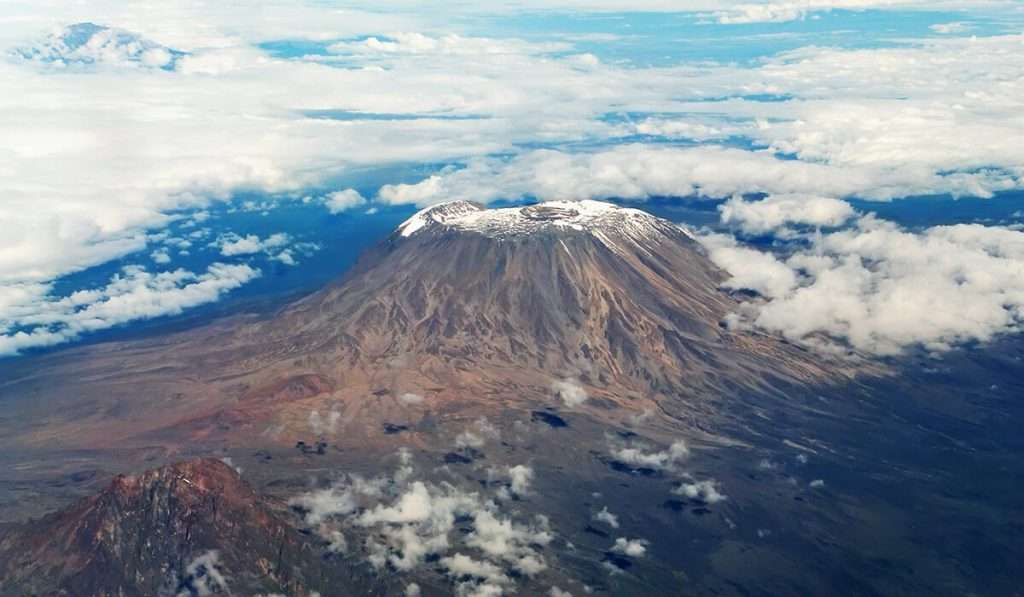
Kilimanjaro boasts the title of Africa’s highest peak and the tallest tree! Andreas Hemp from Germany spent 20 years studying the trees in Kilimanjaro’s remote valleys when he stumbled upon the Kilimanjaro tree.
Using laser technology, Hemp measured the tree and found it stood 81.5 meters tall. To put that in perspective, Rome’s Colosseum is only 48 meters.
But the shocking facts don’t stop there.
Hemp estimates the tree is around 600 years old!
7. There are 7 official routes to the summit

One of the most significant choices when climbing Mount Kilimanjaro is the route.
There are seven established routes to the Rooftop of Africa:
- Marangu: The only root with hut accommodation.
- Machame: The most popular route.
- Lemosho: The most beautiful route.
- Shira: Approaches the summit from the west.
- Rongai: Approaches the summit from the north.
- Northern Circuit: The newest and longest route to the top.
- Umbwe: The shortest, steepest, and most challenging route.
How do you find the best Kilimanjaro route for you? It depends on the route’s scenery, difficulty, altitude acclimatization, success rate, and foot traffic.
8. 30,000 people attempt to climb Kilimanjaro each year
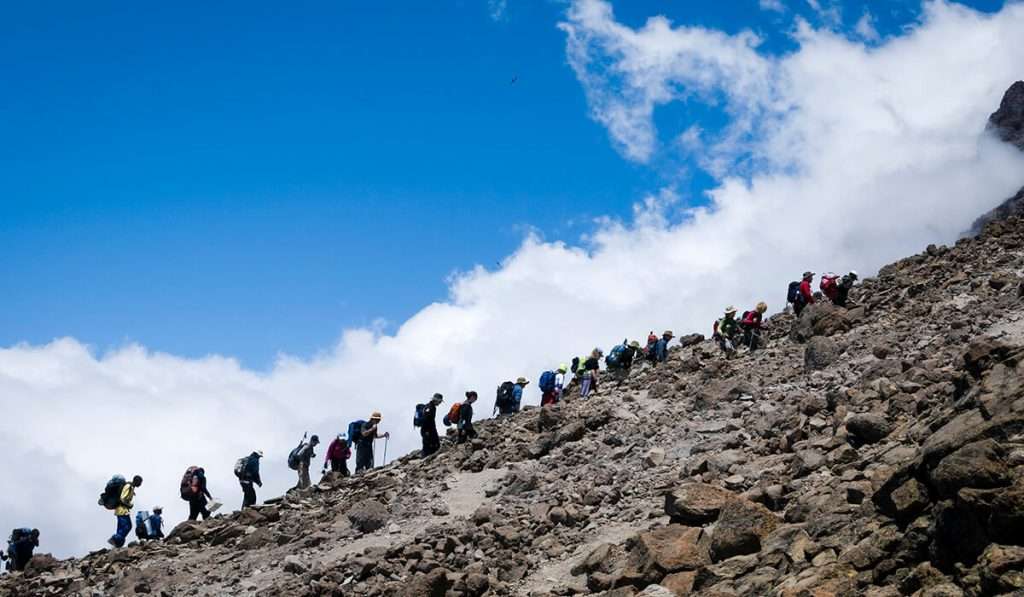
Is summiting Mt Kilimanjaro on your Tanzania bucket list? You’re not alone. Every year, 30,000 people attempt to trek up to the Rooftop of Africa. The summit would be full of people. Wrong!
Despite the many climbers, only some make it to the top. Acute mountain sickness is usually the main culprit, so the longer routes have the highest success rates.
9. The first recorded successful summit of mount Kilimanjaro was in 1889

Humans love a good challenge. Since the mid-late nineteenth century, recorded attempts by European explorers to climb Kilimanjaro have increased.
While some inevitably failed, as Hans Meyer did in 1887, he didn’t give up. Instead, he met with Ludwig Purscheller (an experienced Alpine climber) and returned to Tanzania in 1889. Hans assembled a team of porters and a local guide, Yohani Kinyala Lauwo.
On 6 October 1889, Yohani and Hans became the first recorded people to climb Mount Kilimanjaro successfully.
Two bonus Kilimanjaro facts came out of this expedition:
- Yohani led expeditions on Kilimanjaro for 70 years and lived for 125 years.
- After the 1889 summit, it took 20 years before the next successful climb.
10. Sheila MacDonald was the first woman recorded to summit Mt Kilimanjaro
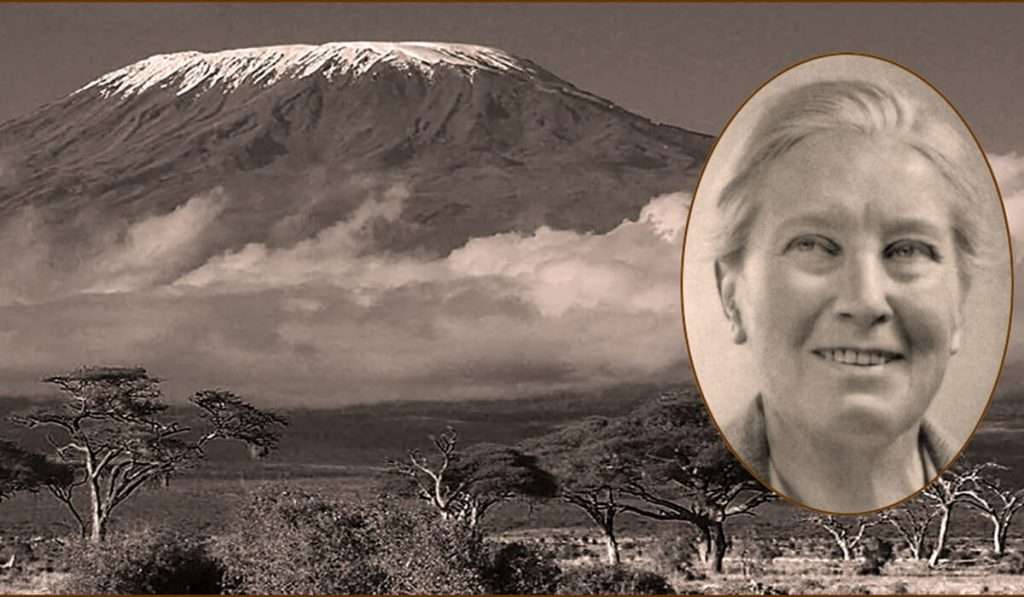
On 27 September 1927, Sheila MacDonald became the first woman (that we know of) to summit Mt Kilimanjaro. Of course, local women in Tanzania may have scaled the mountain before her, but with no written record, it’s hard to know.
Sheila spent her childhood climbing mountains in Scotland with her father. After scaling Mount Etna in Sicily, she came to Tanzania to visit family and decided to try Mount Kilimanjaro.
Despite her traveling companions abandoning their attempt to the summit, Sheila pushed on and earned her spot in the record books.
11. The oldest person to summit mount Kilimanjaro was 89 years old
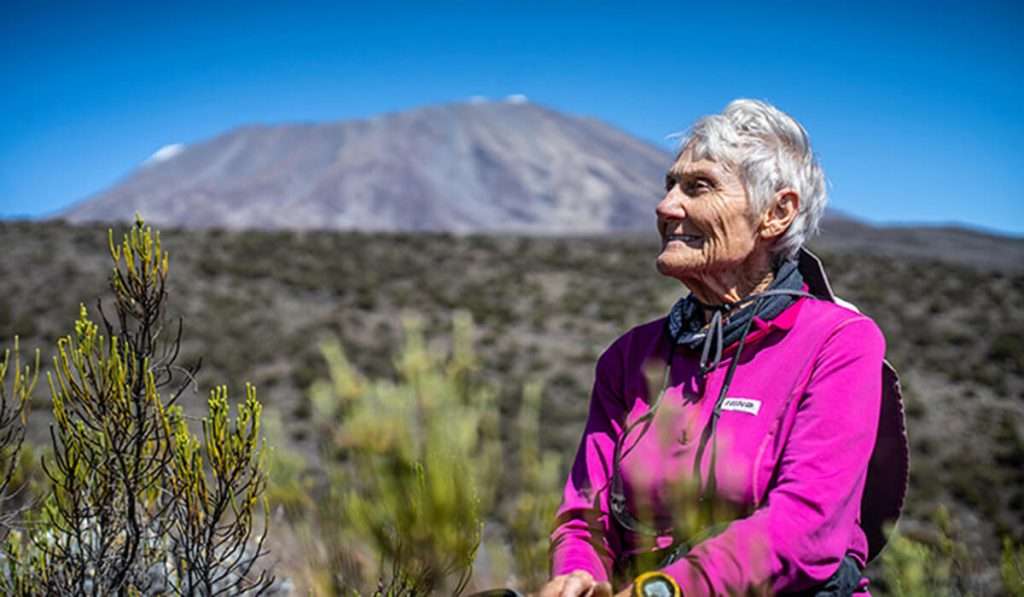
Don’t let your age hold you back from conquering your goals. If Anne Lorimor (an Arizona grandmother) listened to the naysayers, she wouldn’t currently have the world record for the oldest person to summit Mount Kilimanjaro.
On 18 July 2019, Anne summited (unassisted) with a team via the Rongai route. As for the men? The current record holder is Fred Distelhorst from Colorado. He reached Uhuru Peak on 20 July 2017 at the age of 88.
12. The youngest person to summit mount Kilimanjaro was 6 years old

What were you doing when you were six years old? Playing Pokemon cards and re-enacting Power Ranger battles. Well, not Coaltan Tanner. Ever since his parents told him about Kilimanjaro, he has been obsessed with climbing Africa’s highest mountain. In October 2018, his dreams came true.
Along with his parents, Coaltan joined an expedition. On 22 October, he stood at Uhuru Peak, breaking the previous record held by 7-year-old Montannah Kenney.
13. The fastest summit attempt record is 4-hours and 56-minutes
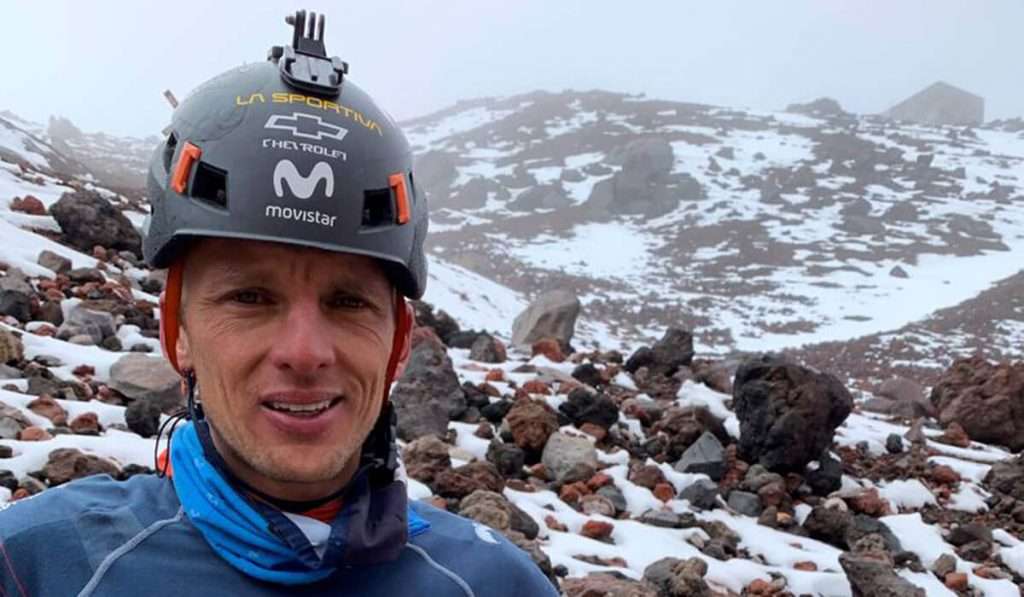
For most of us, summiting Mount Kilimanjaro would be enough of an achievement, but not for Karl Egloff. In August 2014, the Swiss ultra-marathon runner ran (yes, you read that right) the Umbwe route and reached Uhuru Peak in 4 hours and 56 minutes. His total round trip time was 6 hours and 42 minutes.
That’s how long it usually takes to hike some of the routes up Table Mountain in South Africa. Mind-blowing!
14. Bernard Goosen climbed Kilimanjaro in a wheelchair twice
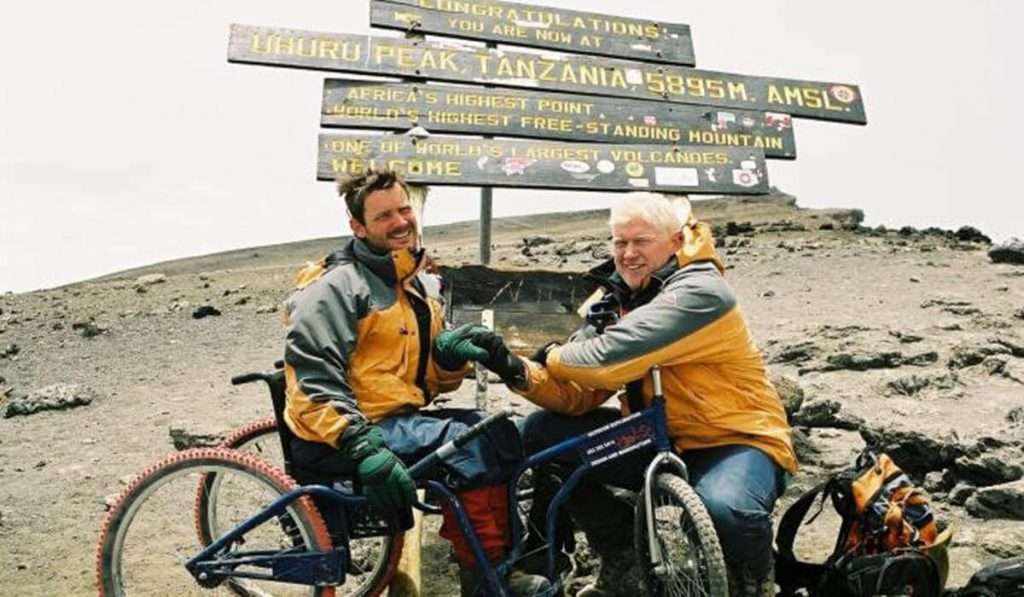
Do you think you can’t climb Africa’s highest peak? Think again. South African Bernard Goosen proved that almost anything is possible with the will and mindset to conquer your dreams.
In 2003, Bernard (who has cerebral palsy) scaled Mt. Kilimanjaro with a modified wheelchair and little assistance. It took only nine days.
Bernard crushed his previous record on his second expedition four years later by summiting in only six days.
15. The glaciers on mount Kilimanjaro are 11,700 years old
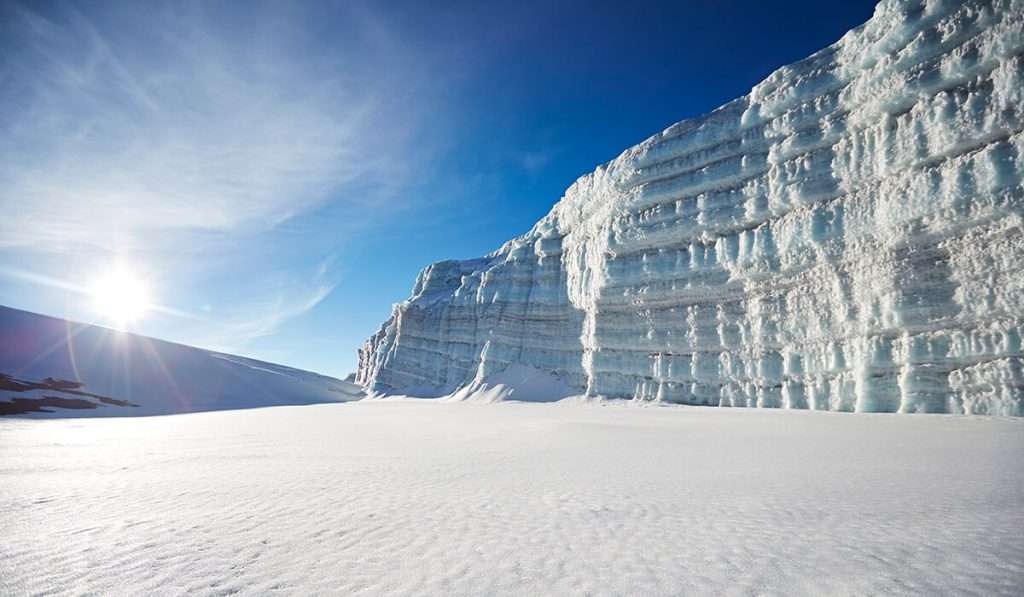
We hear about trees and fossils, which are thousands of years old, but who would have thought ice has lasted that long, too?
In 2000, Lonnie Thompson led an expedition to Kilimanjaro, making the first modern measurements of the mountain’s ice.
After drilling samples from the three glaciers surrounding the summit, he found that the ice dates back at least 11,700 years. Talk about impressive!
This is why the following Kilimanjaro fact is so alarming.
16. The mountain's snow caps are diminishing
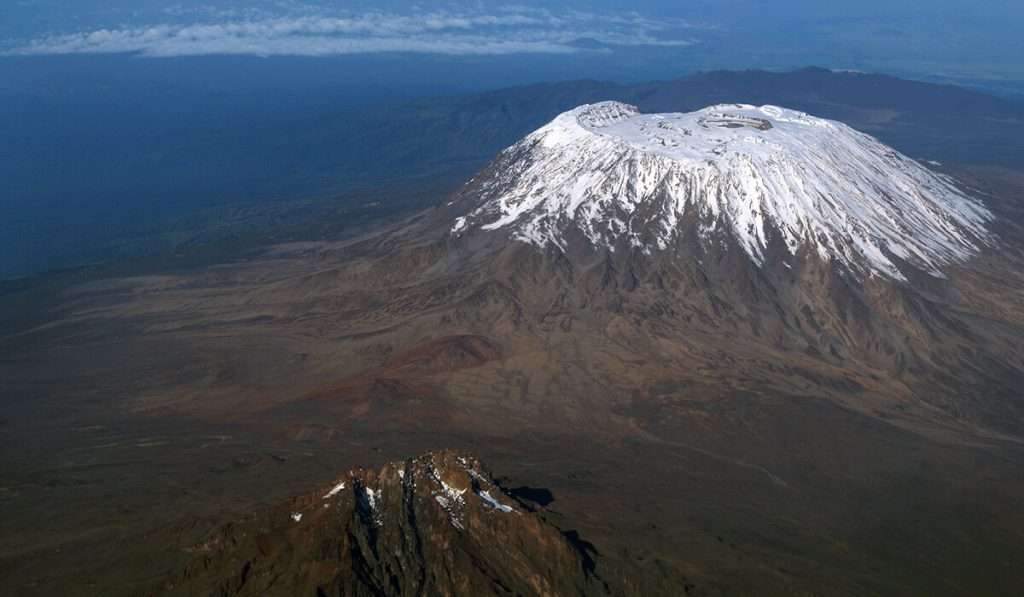
Over the last 100 years, Mt Kilimanjaro has lost 82% of its snow. The mountain will be ice-free by 2030, changing the appearance of Africa’s highest peak forever.
The cause? Global warming.
17. Kilimanjaro is on the equator
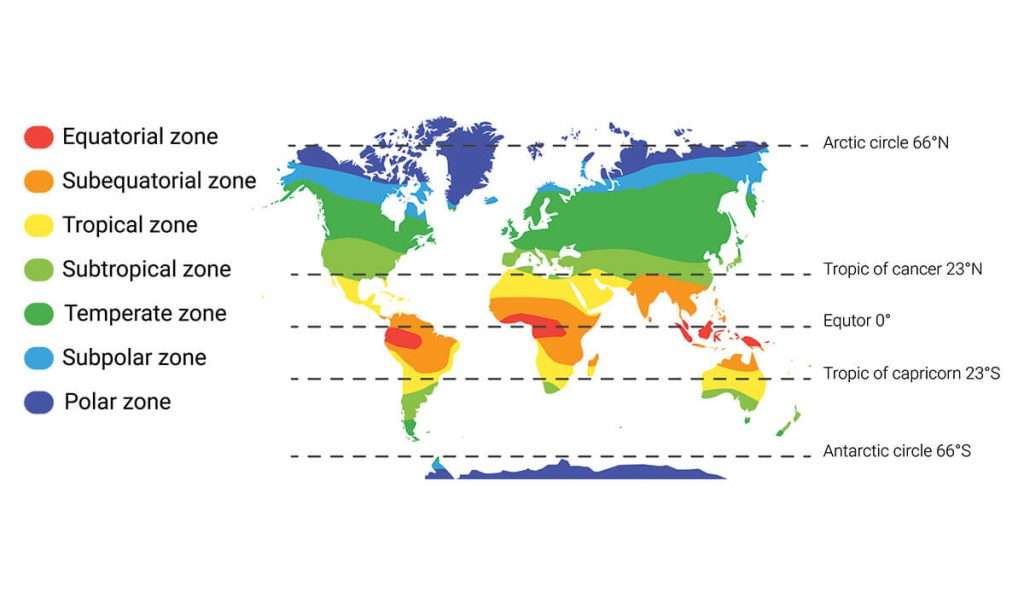
Yup. The Rooftop of Africa is almost on the equator. If you’re finding that hard to believe, you’re not alone. When early explorers first saw the mountain, many believed the snowcaps were ice. Why? No one thought ice could form under the boiling equatorial sun.
18. The origin of the name "Kilimanjaro" is unknown

This is probably the strangest Kilimanjaro fact. The mountain’s name is mysterious, and no one knows where the peak is. Sure, there are theories. The most popular one comes from linguists analyzing the dialects of Tanzania.
They believe it combines Swahili and the Chagga tribe’s local language. In Swahili, the word “Kilima” means mountain. In the local language of the Chagga tribe (who lived near the mountain), ‘Njaro” means whiteness.
When you combine the two words, you get the name Kilimanjaro and a word that perfectly describes Tanzania’s majestic mountain.
19. It's hosted the highest cricket, and rugby matches in the world

While most trekkers want to summit Kilimanjaro and go home, some athletes climb to the next level. In 2014, two cricket teams played the highest game of cricket (at 5,752 m above sea level) to raise money for the Mt. Kili Madness charity project.
Not only did the game raise $150,000, but it smashed the previous Mt. Everest record. In 2015, the highest rugby match took place on Mt Kilimanjaro. The game was held in a dormant volcano crater, and money was raised for the Steve Prescott Foundation.
20. The first written mention of Kilimanjaro dates back to the 2nd century
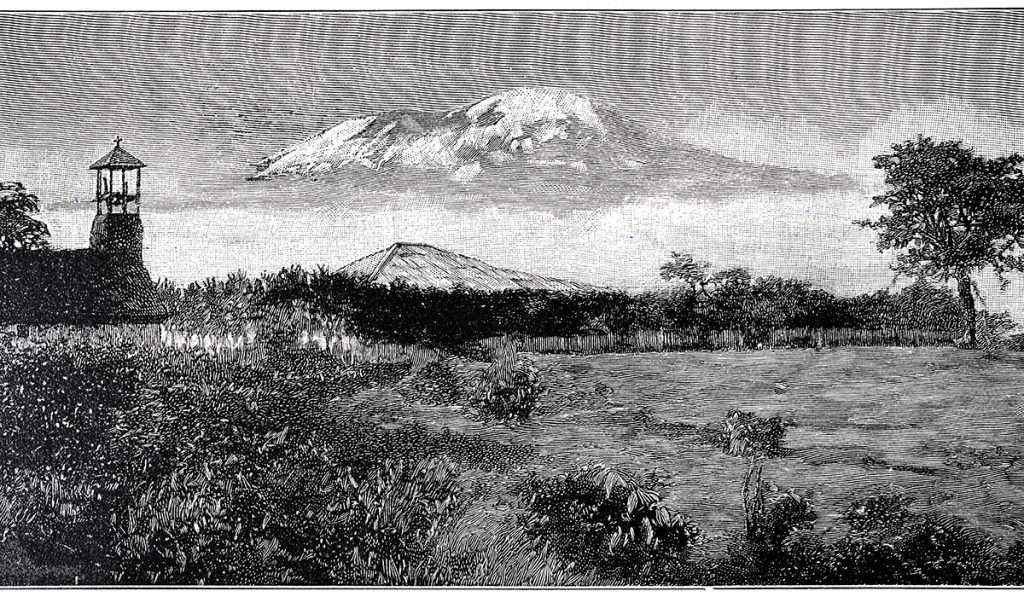
Historical evidence suggests the first recorded (and surviving) mention of Kilimanjaro dates back to the 2nd century. Greek mathematician Ptolemy of Alexandria wrote about the “great snow mountain,” later, Oriental traders reported on a “great mountain west of Zanzibar.” But the mentions don’t stop there.
Fernandez de Enciso (a Spanish writer) called Kilimanjaro “an Ethiopian Mount Olympus.” In 1844, William Desborough Cooley (an Irish explorer) wrote, “The most famous mountain of Eastern Africa is Kilimanjaro.” This is the first written mention of the mountain’s name.
Despite these reports, British geographers didn’t believe a snow-capped mountain in Africa existed until 1848.
How high is Kilimanjaro?
Kilimanjaro is the highest peak in Africa at 19,340 feet or 5,895 meters above sea level and about 4,900 meters above its plateau base.
Book your mount Kilimanjaro expedition
Ready to set your sights on Kilimanjaro and climb Africa’s highest peak? With Kilimanjaro trekking packages starting from 8 days, choose your route, and let us handle all the logistics.
Our professional and experienced mountain guides will help you reach Uhuru Peak. All you need to do is pack your gear and catch your flight to Tanzania, and we’ll handle the rest.
Frequently Asked Questions (FAQs)
How long does it take to climb Kilimanjaro, and is training necessary beforehand?
Climbing Kilimanjaro via the most popular routes typically takes about seven days. While training is not mandatory, it is highly recommended that you be in good physical shape. Training tips often include aerobic exercises, strength training, and progressively longer hikes to build endurance and prepare for the altitude.
What are the risks of altitude sickness during a summit attempt on Kilimanjaro?
Due to the rapid increase in elevation, altitude sickness is a common concern during a Kilimanjaro summit attempt. Symptoms may include headache, nausea, and fatigue. Maintaining a steady pace, staying hydrated, and acclimatizing correctly is essential to mitigate this risk.
How can I ensure a successful summit of Kilimanjaro?
A successful summit of Kilimanjaro requires adequate physical fitness, mental preparedness, and a positive attitude. Training tips emphasize the importance of core strength, endurance, and mental resilience. Hiring a reputable tour operator with a well-planned itinerary and experienced guides can increase your chances of safely reaching the summit.
Are day hikes part of the Kilimanjaro training plan?
Incorporating day hikes into your training plan is beneficial for building endurance and familiarizing yourself with hiking at higher altitudes. These hikes allow you to practice pacing, test your gear, and assess your fitness level in various terrain and weather conditions.
What gear is essential for climbing Kilimanjaro?
Essential gear for climbing Kilimanjaro includes sturdy walking boots, appropriate clothing layers for varying temperatures, and trekking poles for stability. Mental preparedness is also crucial, so consider bringing items like a journal or music player to maintain morale during challenging stretches.
How important is it to sleep low during the ascent of Kilimanjaro?
Sleeping at lower altitudes during the ascent helps the body acclimatize more effectively to higher elevations. Many tour operators plan the ascent with gradual altitude gains and rest days to facilitate acclimatization and reduce the risk of altitude sickness.
Is it true that maintaining a steady pace can make the climb easier?
Yes, maintaining a steady and sustainable pace throughout the climb is essential for conserving energy and avoiding exhaustion. Climbing too quickly heightens the risk of AMS or altitude sickness and fatigue, while a steady pace allows for gradual acclimatization and a more enjoyable overall experience.
What role does physical fitness play in the climb of Kilimanjaro?
Physical fitness is paramount for a successful climb of Kilimanjaro, as the trek requires endurance, strength, and resilience. Training tips often include exercises to improve cardiovascular health, muscle strength, and flexibility to prepare for the physical demands of the ascent.
Are leg lunges beneficial for Kilimanjaro training?
Incorporating leg lunges into your training regimen can strengthen the quadriceps, hamstrings, and glutes, essential muscle groups for hiking uphill and descending steep terrain. Leg lunges also help build lower body strength and endurance, improving performance during the climb.
How can I keep a positive attitude during the challenging moments of the Kilimanjaro climb?
Maintaining a positive attitude during the climb is crucial for overcoming obstacles and staying motivated. Focus on the beauty of the surroundings, set achievable goals, and remind yourself of your reasons for undertaking the challenge. Surrounding yourself with supportive teammates and experienced guides can help uplift spirits during difficult stretches.
What percentage of people successfully summit Kilimanjaro?
On average, approximately 65-70% of climbers successfully reach the summit of Kilimanjaro. Success rates vary depending on route choice, climber experience, and weather conditions. Proper preparation, including physical training, mental readiness, and selecting a reputable tour operator, can improve your chances of reaching the summit safely.













